Would you be surprised to know that the WELL Building Standard has most of the documentation done by the client?! In the 100 features, 87 of them have something the owner is responsible for, while only 55 features have the architect/design team involved.*
If you are a designer aware of The WELL Building Standard, this is a great article for you to share with team members who are still questioning this certification!
As you look at the Preconditions/Optimizations Associated with The Team chart, you can see how each stakeholder is involved with the documentation for certification between what’s required, and what could lead to higher certification. This view also shows a breakdown of how much is required between preconditions, and optimizations. (Side note: a “consultant” could be viewed as someone from an architecture firm, but would help the process as well as assist other team members on the documentation.)
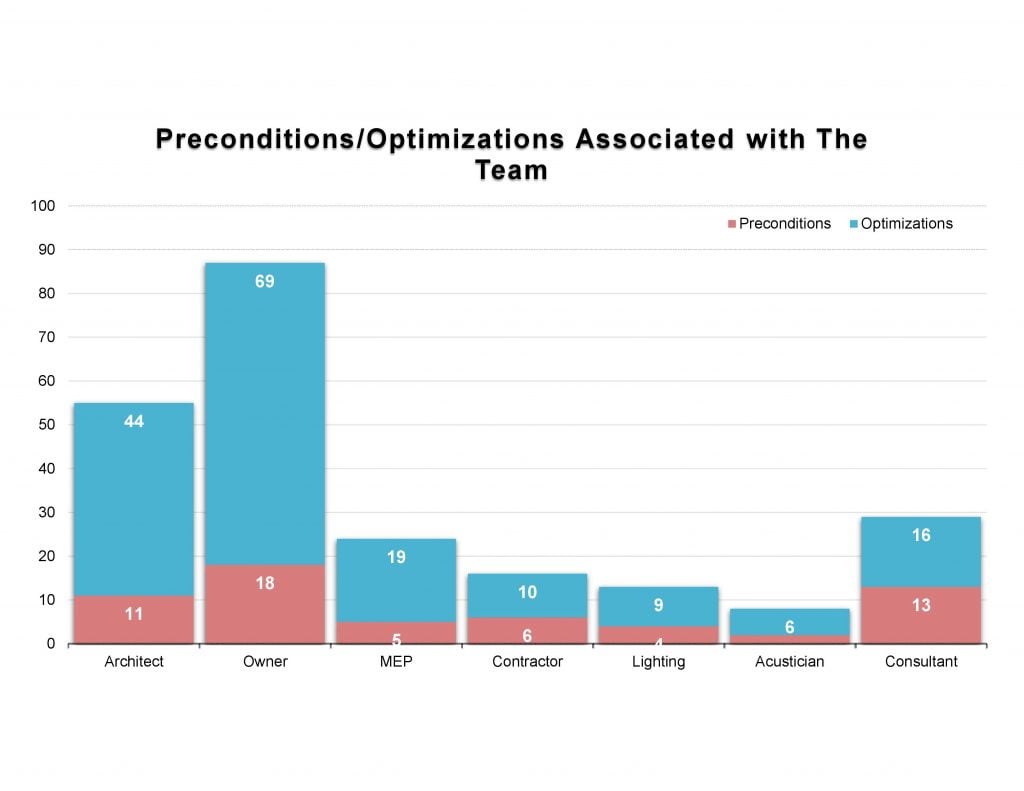
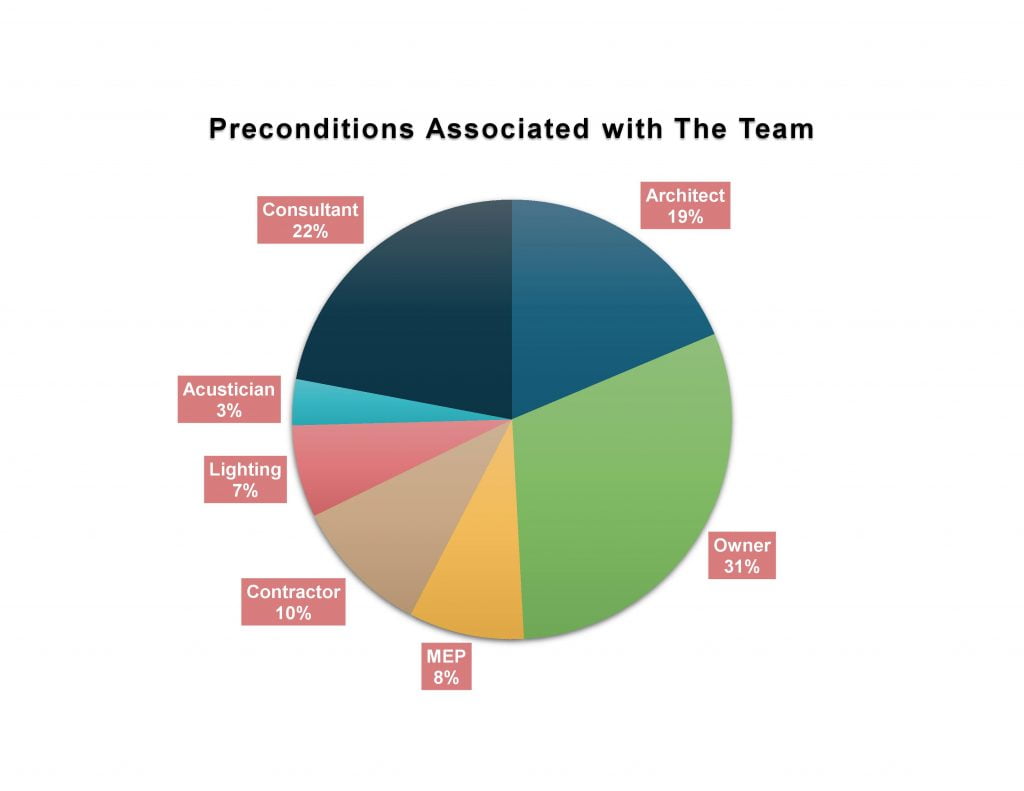
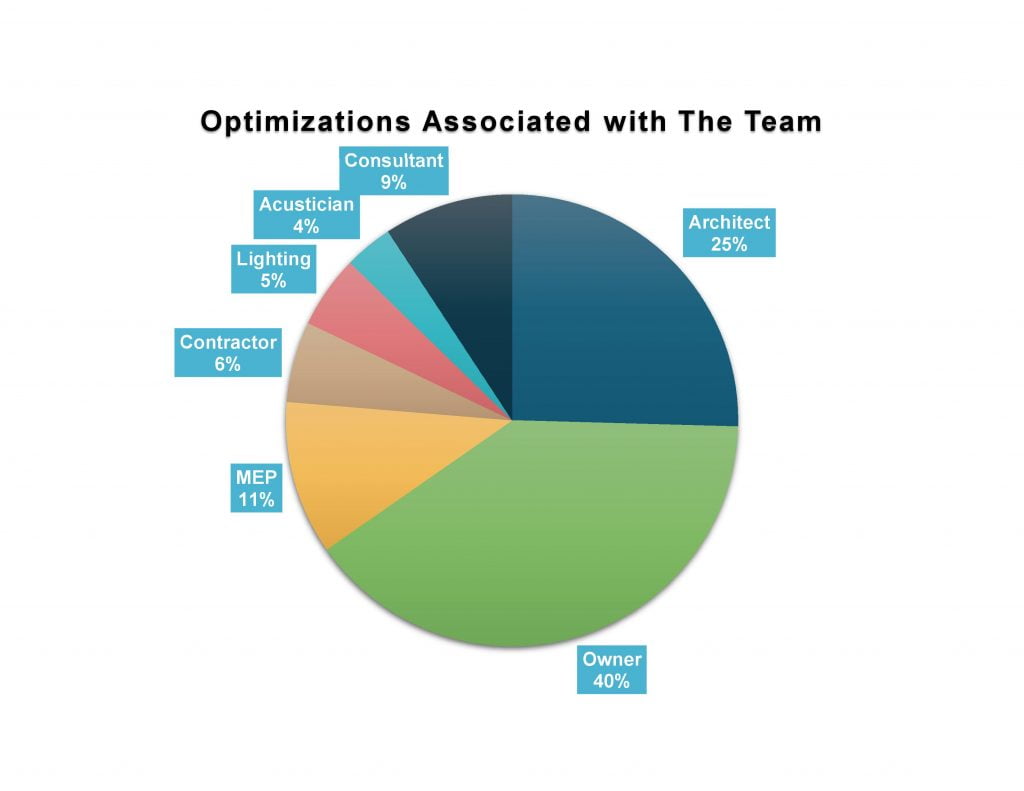
The next chart “Documentation Types Associated with Features” looks at the different types of documentation needed for submission (pink = precondition; blue = optimization). Are you surprised to see how many policy documents (typically by the owner) are needed as opposed to Mechanical Drawings?
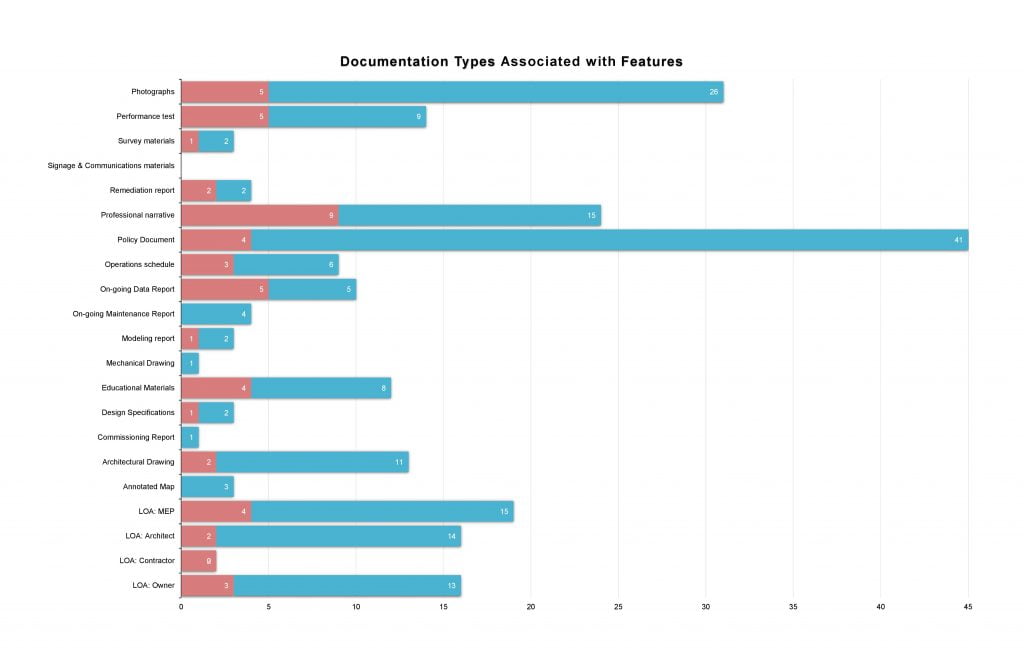
The Documentation Types Required (all Features) chart shows this same information but as a comparison to the percentage of the full standard. Notice how 25% of the standard is related to a submitted LOA (Letter of Assurance) compared to 10% that needs a professional narrative (completed by varied stakeholders).
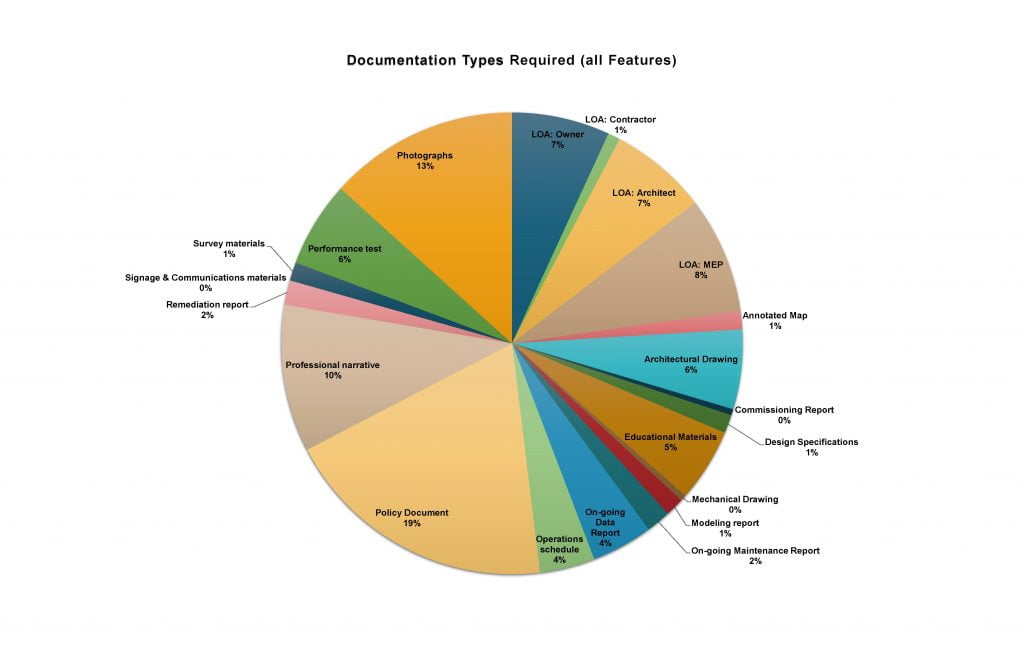

Knowing this:
- how feasible does the WELL Building Standard look to you?
- would this be useful to share with project teams interested in incorporating WELL attributes?
- are you surprised by any of the numbers?
- want to know more on how to get your project WELL certified?
